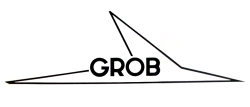PlaneSpottingWorld welcomes all new members! Please gives your ideas at the Terminal.
Grob G103a Twin II
| Type designation | G103 Twin II |
| Competition class | No Class |
| Crew | 2 |
| Length | 8.18 m |
| Height | 1.55 m |
| Wingspan | 17.5 m |
| Wing area | 17.8 m² |
| Aspect ratio | 17.1 |
| Empty mass | ca. 395 kg |
| Water ballast | None |
| Tail water ballast | None |
| Maximum mass | 580 kg |
| Wing loading | ca. 32.6 kg/m2 |
| Maximum speed | 135 Kts |
| Maneuver speed | 92 Kts |
| Speed in Rough Air | 92 Kts |
| Minimum sink rate | ca. 126 fpm@43 Kts (450Kg); 138fpm@46 Kts (580Kg) |
| Best glide ratio | ca. 36.5 |
The ‘Twin II’ is a high performance two-seater sailplane made by Grob Aerospace. The aircraft is of T-tail configuration, and is fitted with a non retractable undercarriage and upper surface airbrakes. Of glass fibre construction, it is designed for training, high performance, and simple aerobatic flying.
Contents
General Description
The G-103 A Twin II (a.k.a the Twin Astir II) is the successor of the Twin Astir with a nose wheel and a fixed six-inch main gear fitted behind the center of gravity - The main wheel is equipped with a hydraulic brake. Modified ailerons produce a substantially improved roll response compared to the previou model. Approach control is by top surface Schemmpp-Hith type airbrakes. The Twin II Acro is similar to the earlier model, but with strengthened mainspar caps and steel control pushrods which permit greater aerobatic performance. The Royal Air Force acquired 100 Acros (known as the Viking T1) for its air cadet training program. The G103 also has a FAA approved modification kit for all-hand control for handicapped operation. The Twin II was succeeded by the Grob 103c Twin III in 1989.
Production
Total of 549 produced, including 100 Viking T, Mk.1s
Flight Tests
February 1983 of Soaring magazine published a flight test evaluation of the GROB 103 TWIN II By Richard H. Johnson.[1]
Records
On 28 September 1981 the Twin II took the world Out & Return record for two-seat sailplanes (1000.88 km/ 621.92 miles).[2] The aircraft (N424GL) was flown out of the Ridge Soaring Gliderport, Pennsylvania, USA, by pilot Thomas Knauff and crew, Rob Gannon.
Technical Details/History
- Service Bulletins can be found on the Grob website here
- A PDF information guide based on the Flight Manual is available from Adelaide Soaring Club here
- A PDF photocopy of the full flight manual (English) is also avaibale from Adelaide soaring here
In-Flight Limitations
In 2003 Service Bulletin 315-64/2 reduced the maximum admissible airspeeds and prohibited acrobatic flight. This was due to reports that the design of the fuselage may not have been sufficient to sustain limit loads during certain maneuvers and during flight at certain speeds. The manufacturer completed further investigations into the effects of certain flight conditions on the fuselage structure and the development of corrective procedures. The manufacturer conducted further static strength tests to verify the safety margin of the fuselage. The results of these tests restored the original flight speed limitations and maneuver operations for the Twin II and allowed the Twin II Acro only basic aerobatic maneuvers (spins, lazy eights, chandelles, stall turns, steep turns, and positive loops). A modification for Models G103A TWIN II ACRO, when incorporated, restores full acrobatic status to these sailplanes (Service Bulletin315-64/3).
References
Sources
Flight Manual: Grob 103a Twin II
http://www.sailplanedirectory.com/PlaneDetails.cfm?planeID=368


